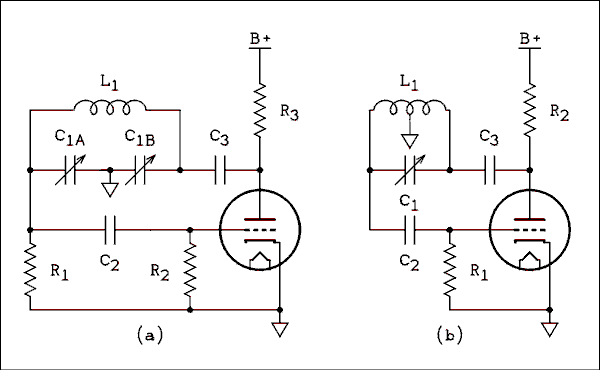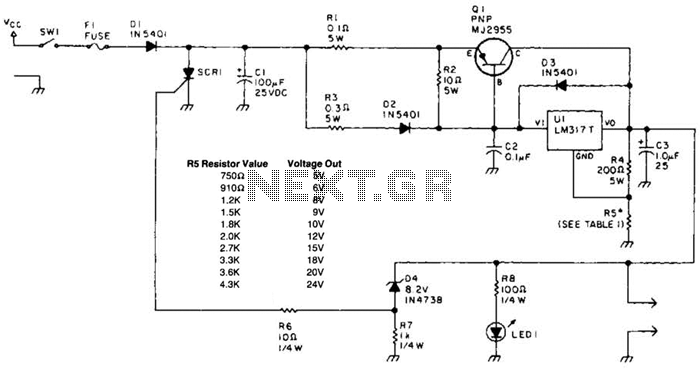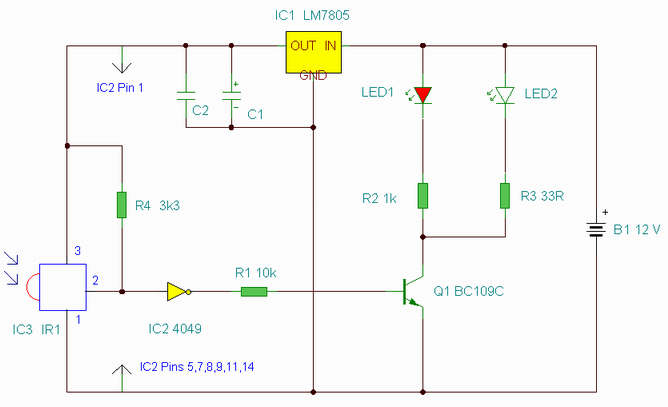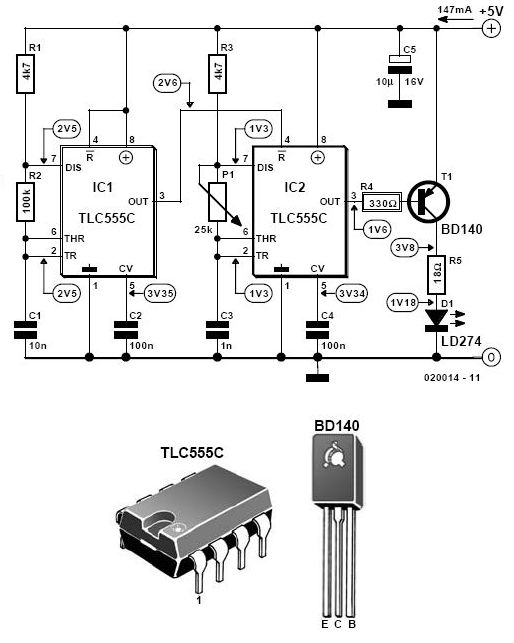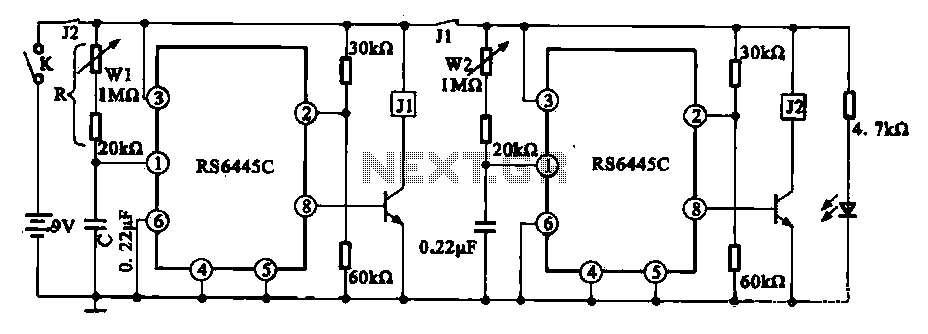
AD574 and PC bus interface circuit
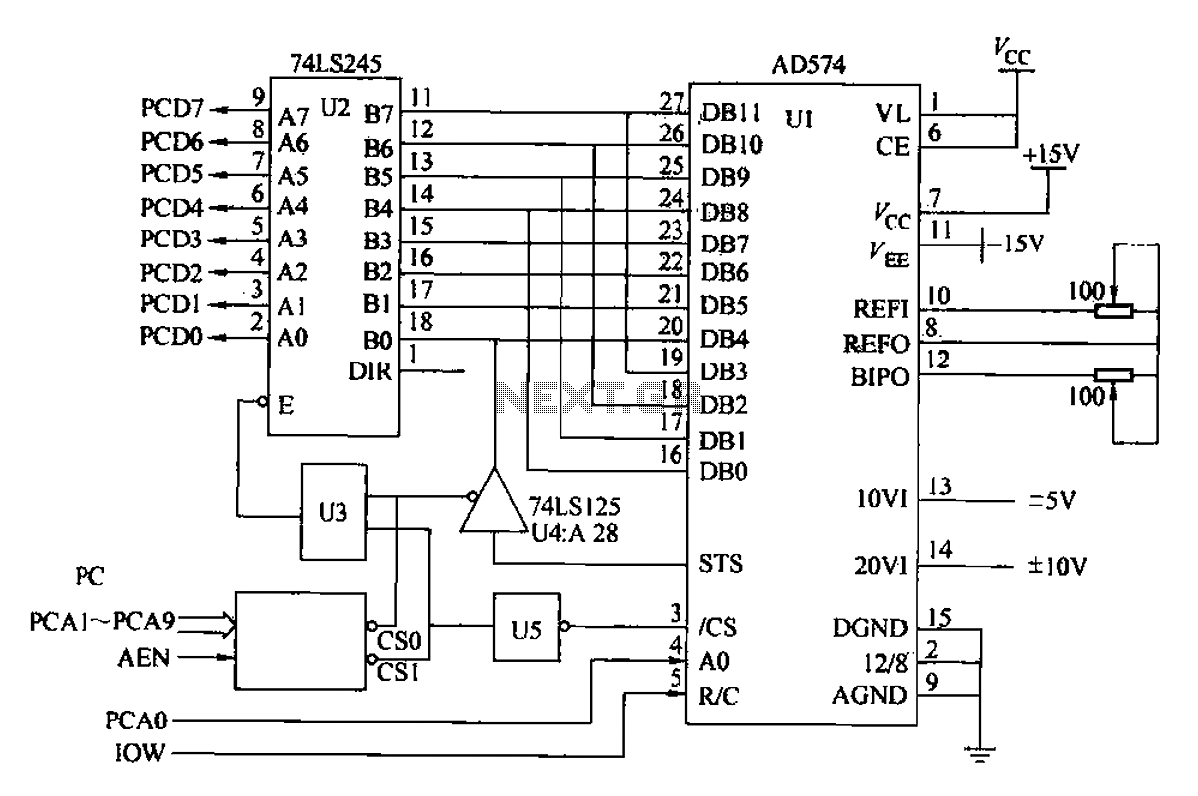
Another example is provided using the AD574 and PC bus. The AD574 converter is represented by U1, while U2 is a 74LS245 bidirectional data buffer. U3 is a 74LS00 two-input AND gate, U4 is a 74LS125 tri-state output gate, and U5 is a 74LS04 inverting gate.
The circuit described involves the integration of an AD574 analog-to-digital converter (ADC) with a PC bus architecture, facilitating the conversion of analog signals into digital form for processing. The AD574 is a precision ADC that operates with a resolution of 12 bits, allowing for accurate representation of analog inputs.
In this configuration, U1 (AD574) receives the analog signal and converts it into a digital output. U2 (74LS245) serves as a bidirectional data buffer, enabling the digital data from the ADC to be transmitted to the PC bus while also allowing data to flow back from the bus to the ADC if necessary. This feature is crucial for maintaining signal integrity and for managing bidirectional communication effectively.
U3 (74LS00) is a dual two-input AND gate that can be utilized for various logical operations within the circuit. This component can be employed to control the flow of data based on certain conditions, ensuring that the digital signals are processed only when specific criteria are met.
U4 (74LS125) is a quad tri-state buffer, which allows the output to be either driven high, driven low, or placed in a high-impedance state. This functionality is essential for bus systems, as it prevents contention on the bus when multiple devices are connected, allowing only one device to drive the bus at any given time.
U5 (74LS04) is a hex inverter that inverts the input signals. This gate can be used to manipulate the logic levels within the circuit, providing flexibility in signal processing and control.
Overall, this circuit exemplifies a typical application of digital logic components in conjunction with an ADC to create a robust interface between analog and digital systems, suitable for use in various electronic applications requiring data acquisition and processing.Another example given in AD574 and PC bus. The figure for the AD574 converter Ul, U2 is 74LS245 bidirectional data buffer, U3 of 74 Lsoo two-input AND gate, U4 to 74LS125 tri-s tate output gates, U5 is 74LS04 inverting gate.
The circuit described involves the integration of an AD574 analog-to-digital converter (ADC) with a PC bus architecture, facilitating the conversion of analog signals into digital form for processing. The AD574 is a precision ADC that operates with a resolution of 12 bits, allowing for accurate representation of analog inputs.
In this configuration, U1 (AD574) receives the analog signal and converts it into a digital output. U2 (74LS245) serves as a bidirectional data buffer, enabling the digital data from the ADC to be transmitted to the PC bus while also allowing data to flow back from the bus to the ADC if necessary. This feature is crucial for maintaining signal integrity and for managing bidirectional communication effectively.
U3 (74LS00) is a dual two-input AND gate that can be utilized for various logical operations within the circuit. This component can be employed to control the flow of data based on certain conditions, ensuring that the digital signals are processed only when specific criteria are met.
U4 (74LS125) is a quad tri-state buffer, which allows the output to be either driven high, driven low, or placed in a high-impedance state. This functionality is essential for bus systems, as it prevents contention on the bus when multiple devices are connected, allowing only one device to drive the bus at any given time.
U5 (74LS04) is a hex inverter that inverts the input signals. This gate can be used to manipulate the logic levels within the circuit, providing flexibility in signal processing and control.
Overall, this circuit exemplifies a typical application of digital logic components in conjunction with an ADC to create a robust interface between analog and digital systems, suitable for use in various electronic applications requiring data acquisition and processing.Another example given in AD574 and PC bus. The figure for the AD574 converter Ul, U2 is 74LS245 bidirectional data buffer, U3 of 74 Lsoo two-input AND gate, U4 to 74LS125 tri-s tate output gates, U5 is 74LS04 inverting gate.
